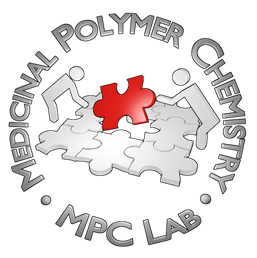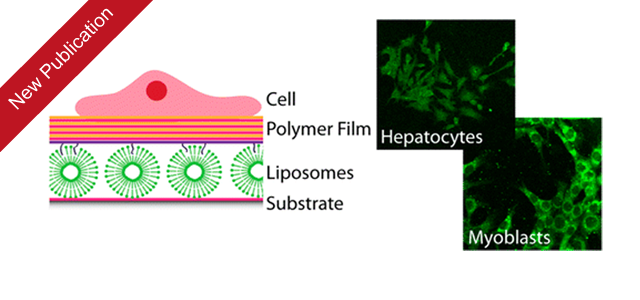Researchers from MPCL have contributed to a publication in ACS Applied Materials & Interfaces entitled “Liposomes as Drug Deposits in Multilayered Polymer Films“.
Abstract
The ex vivo growth of implantable hepatic or cardiac tissue remains a challenge and novel approaches are highly sought after. We report an approach to use liposomes embedded within multilayered films as drug deposits to deliver active cargo to adherent cells. We verify and characterize the assembly of poly(l-lysine) (PLL)/alginate, PLL/poly(l-glutamic acid), PLL/poly(methacrylic acid) (PMA), and PLL/cholesterol-modified PMA (PMAc) films, and assess the myoblast and hepatocyte adhesion to these coatings using different numbers of polyelectrolyte layers. The assembly of liposome-containing multilayered coatings is monitored by QCM-D, and the films are visualized using microscopy. The myoblast and hepatocyte adhesion to these films using PLL/PMAc or poly(styrenesulfonate) (PSS)/poly(allyl amine hydrochloride) (PAH) as capping layers is evaluated. Finally, the uptake of fluorescent lipids from the surface by these cells is demonstrated and compared. The activity of this liposome-containing coating is confirmed for both cell lines by trapping the small cytotoxic compound thiocoraline within the liposomes. It is shown that the biological response depends on the number of capping layers, and is different for the two cell lines when the compound is delivered from the surface, while it is similar when administered from solution. Taken together, we demonstrate the potential of liposomes as drug deposits in multilayered films for surface-mediated drug delivery.

